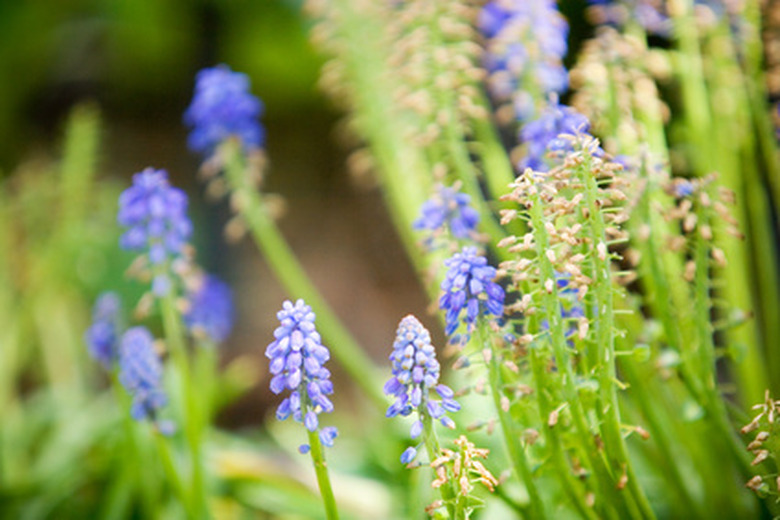Photosynthesis Vs. Cellular Respiration In Electron Flow
Photosynthesis and cellular respiration are almost chemical mirror images of each other. When the Earth had a lot less oxygen in the air, photosynthetic organisms used carbon dioxide and produced oxygen as a by-product. Today, plants, algae, and cyanobacteria utilize this similar process of photosynthesis. All other organisms, including animals, have evolved to utilize some form of cellular respiration.
Both photosynthesis and cellular respiration make extensive use of harnessing the energy from flowing electrons to drive the synthesis of a product. In photosynthesis the main product is glucose, whereas in cellular respiration it is ATP (adenosine triphosphate).
Organelles
Organelles
There is a large difference between respiration within eukaryotic and prokaryotic organisms. Plants and animals are both eukaryotic because they have complex organelles within the cell. Plants, for instance, make use of photosynthesis at the thylakoid membrane within a chloroplast.
Eukaryotes that use cellular respiration have organelles called mitochondria, which are kind of like the power station of the cell. Prokaryotes may use either photosynthesis or cellular respiration, but since they lack complex organelles, they produce energy in simpler ways. This article assumes the existence of such organelles, since some prokaryotes do not even make use of the electron transport chain. That is, you may assume this discussion pertains to eukaryotic cells (i.e., those of plants, animals and fungi).
The Electron Transport Chain
The Electron Transport Chain
In photosynthesis, the electron transport chain occurs at the beginning of the process, but it comes at the end of the process in cellular respiration. The two are not completely analogous, though. After all, breaking a compound down is not the same as galvanizing the production of a compound.
The important thing to remember is that photosynthetic organisms attempt to foment glucose as a food source whereas organisms that utilize cellular respiration break glucose down into ATP, which is the main energy carrier of the cell.
It is important to remember that photosynthesis and cellular respiration take place in plant cells. Often, photosynthesis is mistaken for a "version" of the cellular respiration than occurs in other eukaryotes, but this is not the case.
Photosynthesis vs. Cellular Respiration
Photosynthesis vs. Cellular Respiration
Photosynthesis uses the energy obtained from light to free electrons from the chlorophyll pigments that collect the light. Chlorophyll molecules do not have an infinite supply of electrons, so they regain the lost electron from a molecule of water. What remains are electrons and hydrogen ions (electrically charged particles of hydrogen). Oxygen is created as a byproduct, which is why it is expelled into the atmosphere.
In cellular respiration the electron transport chain occurs after glucose has already been broken down. Eight molecules of NADPH and two molecules of **FADH2** remain. These molecules are intended to donate electrons and hydrogen ions to the electron transport chain. The movement of electrons galvanizes hydrogen ions across the membrane of the mitochondrion.
Because this forms a concentration of hydrogen ions on one side, they are compelled to move back to the inside of the mitochondrion, which galvanizes the synthesis of ATP. At the very end of the process, electrons are accepted by oxygen, which then binds to the hydrogen ions in order to produce water.
Cellular Respiration in Reverse
Cellular Respiration in Reverse
The final step in cellular respiration mirrors the beginning of photosynthesis, which pulls water apart and produces electrons, oxygen, and hydrogen ions. Using this knowledge, you might also be able to predict that photosynthesis involves the movement of hydrogen ions across the thylakoid membrane in order to galvanize the production of ATP. Electrons are then accepted by NADPH (but not FADH2 in photosynthesis). These compounds enter a process like that of cellular respiration in reverse so that they can synthesize glucose for energy usage within the cell.
Cite This Article
MLA
Stutsman, Jacob. "Photosynthesis Vs. Cellular Respiration In Electron Flow" sciencing.com, https://www.sciencing.com/photosynthesis-cellular-respiration-electron-flow-6317087/. 10 June 2019.
APA
Stutsman, Jacob. (2019, June 10). Photosynthesis Vs. Cellular Respiration In Electron Flow. sciencing.com. Retrieved from https://www.sciencing.com/photosynthesis-cellular-respiration-electron-flow-6317087/
Chicago
Stutsman, Jacob. Photosynthesis Vs. Cellular Respiration In Electron Flow last modified March 24, 2022. https://www.sciencing.com/photosynthesis-cellular-respiration-electron-flow-6317087/
